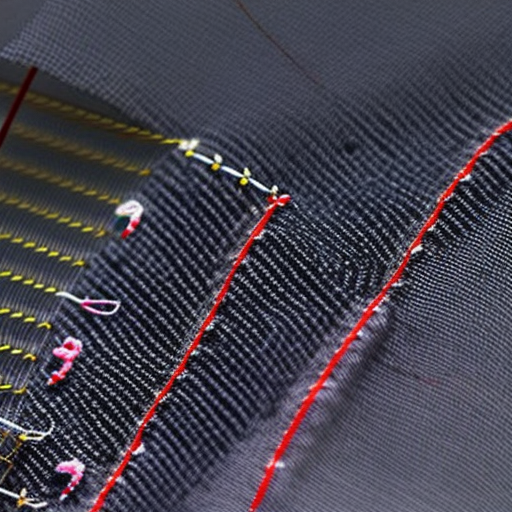Introduction
Mastering different sewing stitches is essential for any sewing enthusiast. Whether you’re a beginner or an experienced sewist, understanding various stitches will expand your repertoire and empower you to create beautiful and durable projects. This guide will provide an overview of some common stitches used in sewing.
Straight Stitch
The straight stitch is the most basic and commonly used stitch in sewing. It is created by making equally spaced straight stitches in a continuous line. Use the straight stitch for simple seams, mending, and topstitching. It is the foundation for many decorative stitches as well.

Usage: Seams, mending, topstitching
Technique: Insert the needle from the fabric’s underside, pull the thread through, and repeat in a straight line to create even stitches.
Zigzag Stitch
The zigzag stitch is ideal for preventing fraying fabric edges, attaching elastic, and securing seams that require some flexibility. The needle moves in a zigzag pattern, creating a more flexible and durable seam compared to the straight stitch.

Usage: Seam finishing, attaching elastic, decorative purposes
Technique: Set your sewing machine to the zigzag stitch setting and adjust stitch width and length according to your project’s needs.
Backstitch
The backstitch is known for its strength and durability. It is commonly used for securing seams that undergo significant stress, such as garment openings, buttons, and decorative topstitching. The backstitch creates backward stitches to reinforce forward ones, resulting in a strong and resilient seam.

Usage: Seam reinforcement, buttonholes, decorative topstitching
Technique: Stitch forward and then take the needle back through the end of the previous stitch. Repeat to create a solid line. This technique can be done by hand or using a sewing machine.
Blanket Stitch
The blanket stitch is commonly used for sewing edges and creating decorative finishes, especially when working with thick fabrics, felt, or appliqué. This stitch resembles the top of a blanket when done correctly, hence the name.

Usage: Appliqué, joining fabric edges for decorative purposes
Technique: Insert the needle from the backside through the fabric edge, leaving a small space. Bring the needle around and insert it back into the same hole forming a loop. Pull the thread through, and repeat to create a line of evenly spaced loops.
Conclusion
These are just a few examples of the many stitches available to sewists. Understanding the purpose and technique behind each stitch allows you to choose the appropriate stitch for your sewing project. Experiment with different stitches, thread types, and tensions to achieve various effects and improve your sewing skills. Happy stitching!




